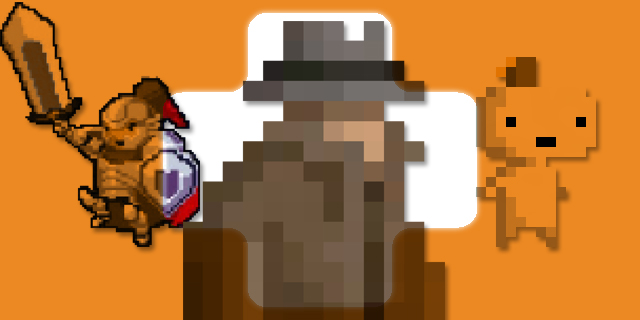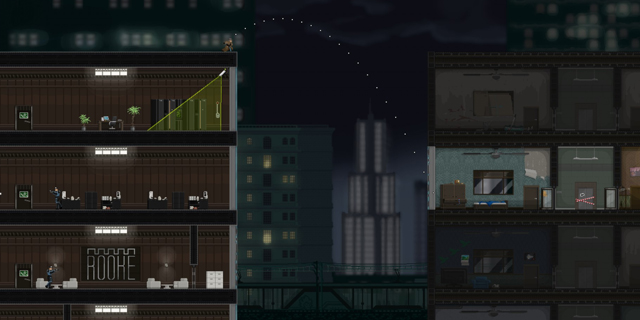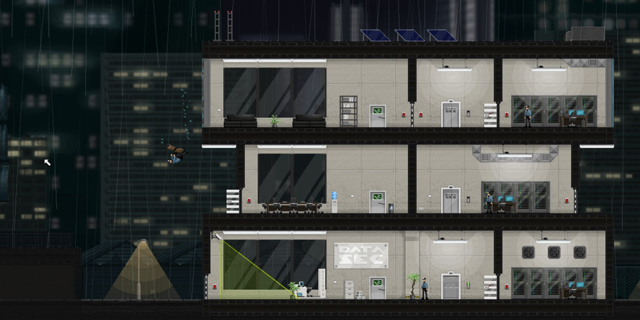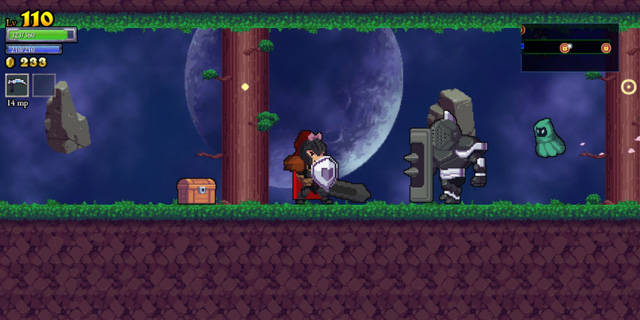
Games are a compilation of many different elements carefully pieced together to make a whole, cohesive experience. At least, that’s how it usually goes. Often times some parts will be stronger than others, which is when it becomes clear on which mechanics or design ideas the developer focused the most. Maybe the story fell by the wayside as a result, or the visuals leave something to be desired, but the gameplay itself is fun. Other times you’ll be left with a game with different pieces that work well on their own, but don’t gel together quite as well as one would hope.
There are those rare occasions, however, when one element both shines above the rest and manages to make the rest of the game seem that much more exciting and well-designed as a result. The other parts are serviceable, but they wouldn’t work without that singular piece of the puzzle that keeps it all from falling apart (or at least losing its luster). While this doesn’t appear to be a common result, it seems to be most prevalent in indie games. A recent release, Gunpoint, is the perfect example. It’s a fantastic 2D stealth game that manages to boil down a popular genre into some basic, albeit manageable mechanics and turn it into more of a puzzle game than anything else (although even binding it to that particular genre is doing it a disservice). Mark of the Ninja did this, but its approach was all about staying true to the genre, while Gunpoint is distilling the basic elements of it to create something special.

Sure, it may seem like yet another retro-style 2D indie title, yet it manages to stand out on its own thanks to its gameplay. More importantly, it handles a very specific mechanic with perfection. The one thing that hooked me from the very beginning is the jump mechanic. Yes, jumping. Well, it’s more of a leap than a basic jump you would find in, say, a traditional platformer. That being said, it’s designed so elegantly and it works so fluidly that you’ll probably spend more time just messing around with this basic mechanic than progressing the actual game. At least, that’s what I ended up doing.
It’s quite simple: using the mouse, you left click and hold the spot you want your trench-coated protagonist to leap to and it will display the trajectory. Let go and you’ll go flying, allowing you to leap and climb up the sides of buildings and even make daring escapes when the situation calls for it. It’s also the most useful way to knock out the guards standing in your way, as long as they don’t see you before you attack. Gunpoint is full of some unique mechanics, yet this is the one that you’re introduced to first, and it’s the one that sticks with you the entire time you play.
Since the game is designed around this simplistic jump mechanic, you always have an excuse to use it. Need to explore a building’s surroundings before you attempt to break in? Just leap around it. Want to find an easy way to take out a guard on the top floor while distracting a different guard on the floor below you? Just jump towards the first guard and push him through the window, creating noise and allowing you to more easily sneak up on the now-distracted guard. There are many other applications, so you’ll never run out of reasons to just leap around like a flying squirrel whenever possible.

Games like Gunpoint are memorable because of these most basic mechanics that are so expertly crafted ,allowing the rest of the game to more easily follow suit. It’s, in part, why indie games are so successful these days. Larger games have to go out of their way to make sure they seem well worth that $60 price tag.
As much as I love Assassin’s Creed III, its obsession with making sure you have ten different things to do at once was a bit much; unfortunately, it has become a series trademark at this point. Gunpoint does a few things incredibly well, and all of those things work because of that one underlying mechanic. Assassin’s Creed III, on the other hand, has many, many different mechanics, some which work better than others, and very few of them stand out particularly well on their own. Maybe this isn’t entirely a bad thing in some cases, but it certainly can lead to a loss of identity, especially when you compare games purely based on their gameplay and nothing more.
Gunpoint is a special game, yet it isn’t the only recent example of this trend. Games like Fez, Rogue Legacy and even Journey have multiple amazing ideas going for them, but they may not stand out if not for those baseline mechanics or elements that keep those ideas in check. They have succeeded for a multitude of reasons, but there are always one or two very specific things you could point to and say, “Now this is why this game succeeds.”

The basic platforming and rotation mechanics in Fez were excellent, but the underlying puzzles and metagame at the heart of its design is what kept people talking about it. Rogue Legacy managed to take the roguelike genre and turn it on its side, with its lineage system and combination of elements from other, similar games. This, in turn, made a game more approachable than what you might traditionally expect from the genre. Journey speaks to many people for many different reasons, but its approach to co-op is what made it something truly special in my mind.
These mechanics aren’t as much of a core piece of their design puzzle as Gunpoint’s is, yet they are all fundamentally important to preserving what makes them stand out in the first place. There are quite a few other examples, especially coming from the indie scene, giving us ample opportunity to explore just what makes these games tick.
It speaks to the power of this medium when you can take a game like Gunpoint and strip away everything else but its core jumping mechanic, and still be left with something that is both special and also has an identity of its own. Not every worthwhile or memorable game falls into this category, but sometimes it’s a good thing to follow Gunpoint’s lead and go back to the basics.



















